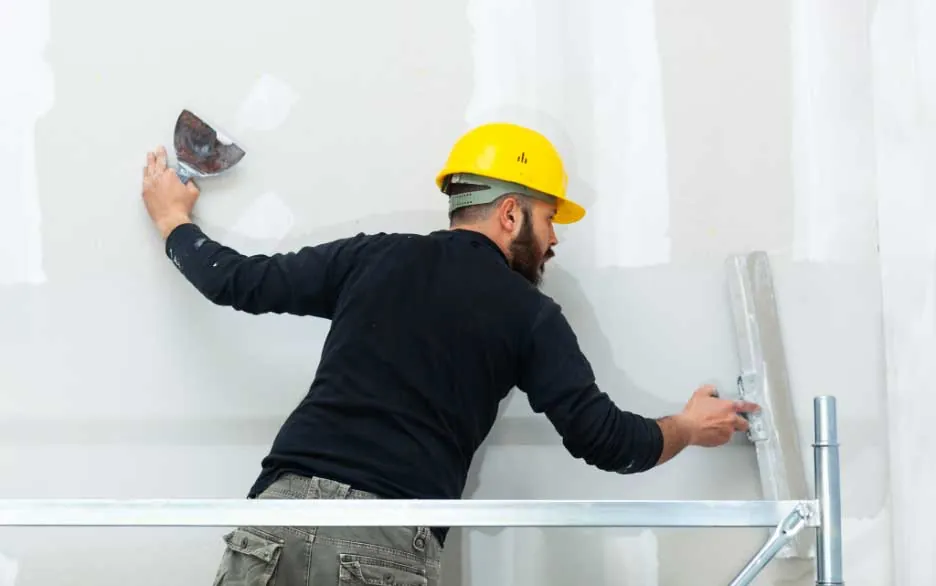Complete Guide to Effective and Reliable Drywall Installation
Drywall installation is an important part of any kind of construction or improvement project, demanding a thorough technique to make certain both efficiency and dependability. It is essential to explore the subtleties of each action in the procedure, as they jointly add to the general success of the drywall installation.
Necessary Tools for Drywalling
When beginning on a drywall setup job, having the right tools is important for attaining a specialist coating. Crucial devices include a drywall knife, tape step, and a T-square, which are fundamental for accurate dimensions and smooth cuts. A drywall lift is also extremely beneficial, particularly for ceiling installments, allowing for much easier handling of heavy panels.
For fastening the drywall, a cordless drill and drywall screws are required. The drill needs to be furnished with a drywall little bit to ensure effectiveness and accuracy. In addition, an essential tool is the drywall saw, which helps with reducing about electrical outlets and other barriers.

Additionally, safety gear such as security glasses and a dirt mask are important to make certain individual safety throughout the setup process. Using the right devices not just improves the quality of the installation yet likewise improves the operations, making the job a lot more effective general.
Preparing the Room

Following, examine the condition of the ceilings and walls. Fix any type of existing damages, such as holes, fractures, or peeling paint, to guarantee a smooth and also surface for drywall application. In addition, look for electrical outlets, plumbing lines, and cooling and heating air ducts, marking their places to stay clear of issues during installation.
It is likewise important to gauge the room properly, figuring out the measurements of the wall surfaces and ceilings to determine the ideal amount of drywall required. Create an in-depth strategy that consists of the layout and orientation of the drywall panels.
Installation Methods
Effective installment methods are essential for attaining a professional finish in drywall projects. Proper measurement and cutting of drywall sheets are essential actions. Constantly measure the wall area properly, permitting for any type of electrical outlets or buttons. Utilize an utility knife for clean cuts, scoring the paper face and breaking the board along the scored line.
When hanging drywall, start from the leading Website and job downward, guaranteeing that the long side of the board is vertical to the framework. Protect the sheets with screws rather than nails, which supply better holding power and decrease the danger of popping. Place screws every 12 inches along the sides and every 16 inches in the area of the board.
For corners, utilize edge beads to attain sharp, tidy edges. When setting up on ceilings, utilize a drywall lift or have a partner assist in holding the sheets in place (drywall repair). Preserve a gap of about 1/4 inch over the floor and ceiling to accommodate expansion and contraction
Ending Up Touches

Begin by applying joint tape over the seams. This can be either paper or fiberglass mesh tape, with paper being chosen for its longevity. As soon as the tape is in place, it's time to use the very first coat of joint compound, also referred to as mud. Make use of a 10 to 12-inch taping blade to spread the compound uniformly over the taped seams, feathering the edges to mix with the surrounding drywall.
Permit the compound to dry thoroughly, commonly 24 hours. After drying out, sand the surface area lightly with fine-grit sandpaper to eliminate any kind of flaws. drywall contractor. Repeat the mudding and sanding process, typically a couple of layers, making sure each layer is smooth and flush with the drywall surface area
Typical Blunders to Stay Clear Of
Numerous DIY fanatics come across challenges throughout drywall setup that can compromise the final outcomes. One common error is stopping working to correctly measure and cut drywall sheets.
Another constant error is inappropriate fastening. Making use of as well few screws or nails can result in loose drywall, while overdriving fasteners can trigger the paper to tear, weakening the structure. It's important to preserve constant spacing, normally every 16 inches, and to ensure that bolts are flush with the surface area.
Furthermore, not addressing moisture concerns prior to installment can lead to mold and mildew development and structural damage. Constantly evaluate the environment and usage moisture-resistant drywall in high-humidity areas.
Final Thought
Reputable and efficient drywall setup needs thorough focus blog to detail throughout the procedure. Staying clear of usual errors further adds to a professional result, underscoring the importance of precision and method in successful drywall projects.
It is necessary to explore the subtleties of each step in the process, as they collectively contribute to the overall success of the drywall installation.When getting started on a drywall installment task, having the right devices is essential for achieving a specialist coating.For attaching the drywall, a cordless drill and drywall screws are necessary.Correctly preparing the room is vital for a successful drywall installment.Reliable installment methods are essential for attaining a professional surface in drywall jobs.
Comments on “Economical Drywall Repair Options for Your Fort Worth Home”